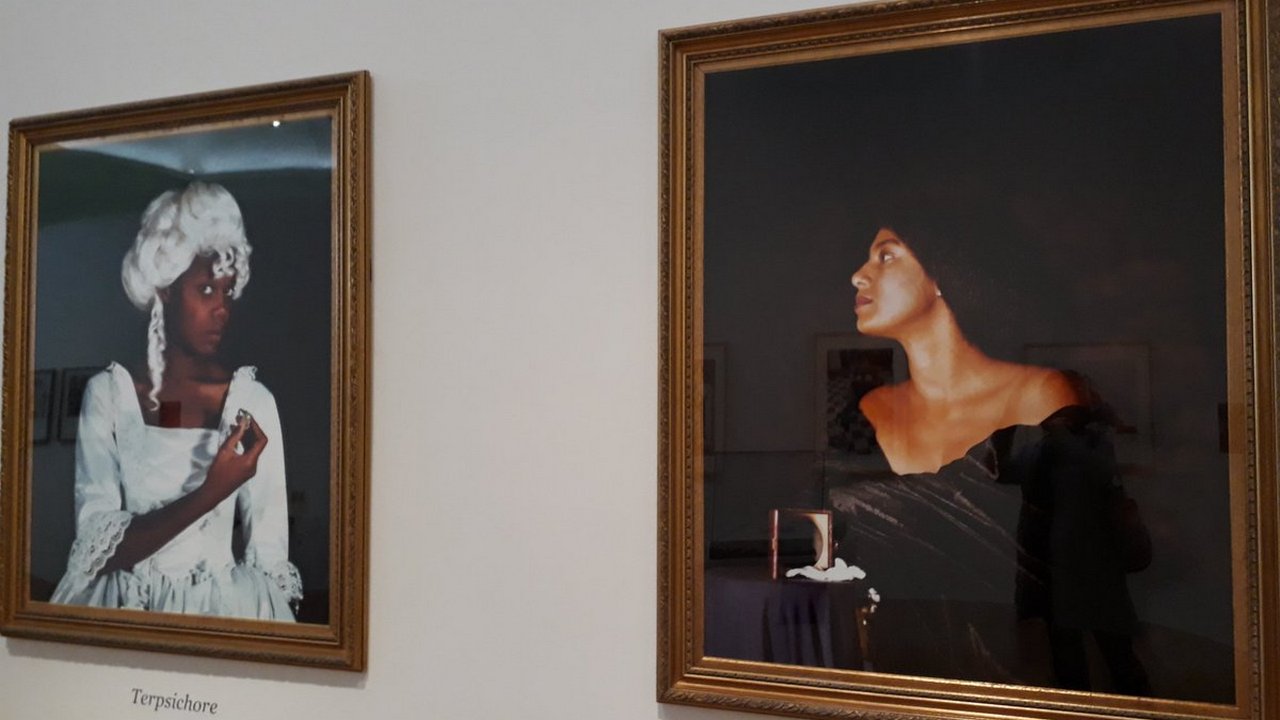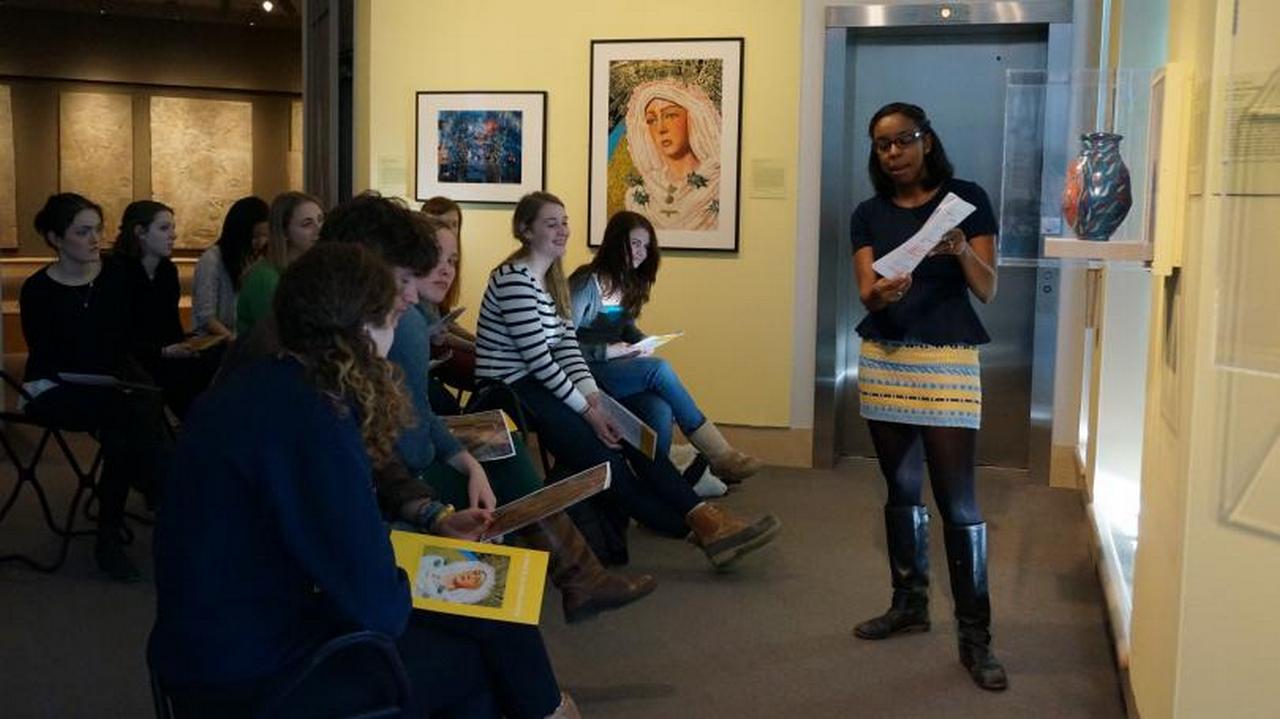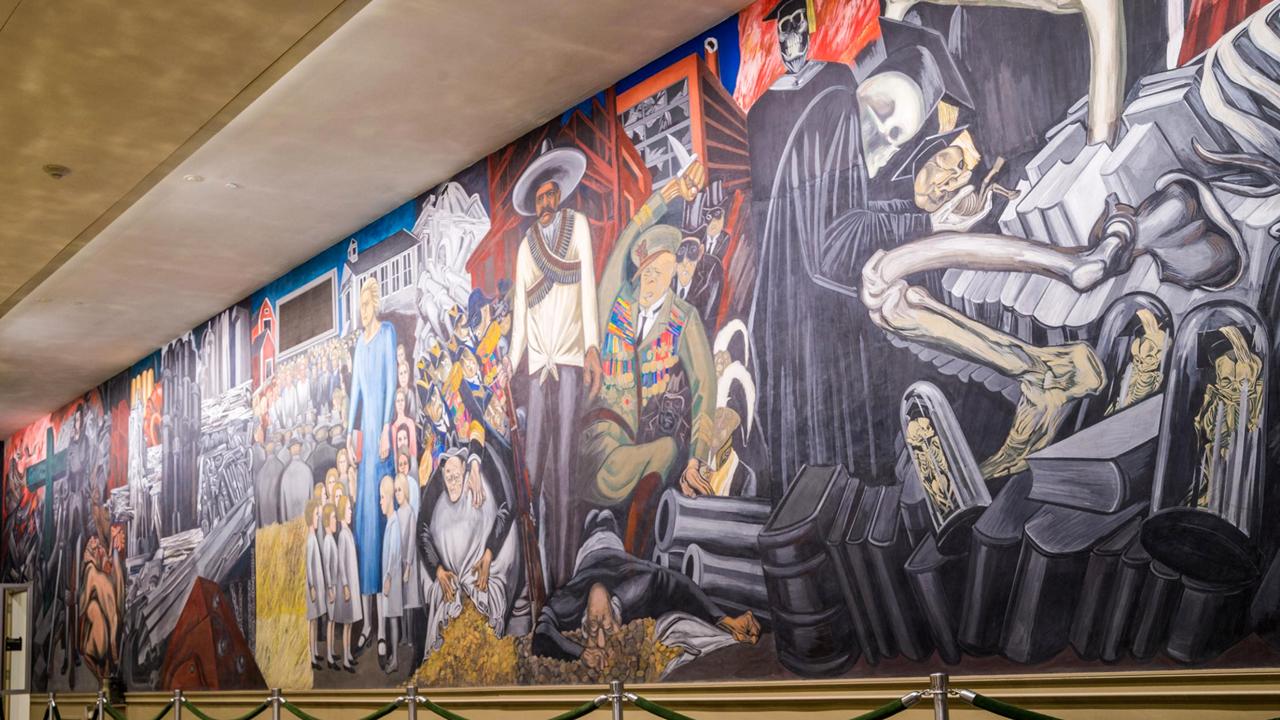The Hood Museum of Art in Hanover, New Hampshire, is actually North America’s oldest museum in continuous operation. Dating back to 1772, it is owned and operated by Dartmouth College, and was founded just 3 years after the college itself. With nearly 65,000 objects in its permanent collection, this small museum boasts quite an impressive range of art. There’s a bit of everything, from Ancient Near Eastern reliefs, to American landscapes, to European paintings, and even some home furnishings.
While there are no “world famous” pieces in this museum that most would have heard of, I find it refreshing to wander this quiet museum and not worry about when you will get to the “Mona Lisa” of this college art museum. You get to really look at the art and take it in for what it is, not what you have heard about it. There is a substantial amount of their collection on display, and makes for a well rounded yet not overwhelming experience.
Relief from the Northwest Palace of Ashurnasirpal II at Nimrud
The King and the Genie, Relief from the Northwest Palace of Ashurnasirpal II at Nimrud, 883-859 BCE, Gypsum
While there are many gems in the permanent collection, my favorite thing to see is the group of reliefs from the Northwest Palace of Ashurnasirpal II at Nimrud, Assyria, dating back to circa 883-859 BCE. Ashurnasirpal II was the King of Assyria from 884-859 BCE, and inhabited this palace in present-day Iraq. These over life-sized reliefs made of gypsum occupy a vast wall in one of the galleries, and show a variety of figures, including a King and a Genie. What I find most interesting is that if you look up close, you can see bands of cuneiform (an ancient style of writing) that proclaim the laws of the kingdom. These reliefs stick to the custom of depicting figures solely in profile, and are easily relatable to Egyptian and other Eastern art from that timeperiod. This impressive grouping remains powerful, even removed from its original context, and gives a sense of grandiosity that the original palace must have had. The museum has informative pamphlets that go into depth about the reliefs, the laws they proclaim, the figures they depict, and the provenance of the works themselves.

Maud Sulter, 1989, dye destructions print
Maud Sulter, Terpsichore, 1989, dye destructions print. Arts Council Collection, London. Photograph courtesy of Maud Sulter and the Arts Council Collection, Southbank Centre, London. On view in the exhibition Black Womanhood. Hood Museum of Art, Hanover, New Hampshire

In addition to the vast permanent collection, the Hood Museum also presents about eight special exhibitions each year, as well as two teaching exhibitions each term. To quote the Museum itself, “The exhibitions program of the Hood Museum of Art represents one of the most important means by which the museum fulfills its primary mission: to foster a greater appreciation of the visual arts as a medium for the expression of ideas and cultural values. The exhibitions presented by the museum are intended to contribute to scholarship in art history and related disciplines and to offer insight into the artistic production of many different historical periods and cultures.” The current exhibitions are entitled “Black Womanhood: Images, Icons, and Ideologies of the African Body” and “Ruscha and Pop: Icons of the 1960s”.
Perhaps the most interesting exhibition program that the Hood has (at least to me, as an undergrad Art History major…) is called A Space for Dialogue. This program, started 7 years ago, allows the Senior Interns at the Museum to curate Mini-Exhibitions in the entrance lobby to the museum itself. There have been over 38 since 2001, each accompanied by a brochure written by the intern, and ranging in themes from Consuming Life: On Ideals of Beauty and Assuming Identity in a Culture of Fear to Picturing Family in the “South”: Legacies of the American Civil War. These exhibitions use works from the permanent collection that have not been displayed recently to create a provocative and thoughtful statement as well as give the Seniors a chance to get some hands-on curatorial experience. The full title of this program is: A Space for Dialogue: Fresh Perspectives on the Permanent Collection from Dartmouth Students, and it truly creates a venue for interaction not only between the students and their selected works of art, but also between the viewers, the students, and the museum itself.

Detail of mural by José Clemente Orozco at Baker Library, Dartmouth College, Hanover, New Hampshire.
Gods of the Modern World, detail of mural cycle The Epic of American Civilization. Detail of mural by José Clemente Orozco at Baker Library, Dartmouth College, Hanover, New Hampshire.

The museum is located just off “The Big Green” at the heart of both Dartmouth College’s campus as well as the college town of Hanover, New Hampshire. It is situated next to the Hopkin’s Art Center, and just off the main street where you can find Lou’s (a classy ‘50s style diner, which is also the best place for breakfast in the area) as well as many cute shops and restaurants. Just across the green is the Baker Library, home to Jose Clemente Orozco’s massive mural project entitled The Epic of American Civilization. These works of art depict an intricate and compelling narrative that covers the history of the Americas, beginning with the Aztecs’ migration into central Mexico and ending with the development of our modern industrial society. Located in the Reserve room in the lower level of the library, these vibrant murals (comprised of 24 individual scenes and covering approximately 3,200 square feet) are a must-see for anyone in the area.
Overall, the Hood Museum of Art is a wonderful place to simply enjoy art. As long as you go with an open mind and an eye that is not looking for a Manet or Michelangelo, I truly believe anyone can really enjoy this peaceful and accessible collection. The special exhibitions are always worth a look, and the Museum Staff are very friendly and more than happy to answer any and all questions.

View of Hood Museum of Art from courtyard
Hanover, New Hampshire is pretty far off of the beaten path for most, but the Upper Valley is a great place for a weekend retreat. In the summer, there are endless outdoors activities and even a Drive-In nearby. The Fall offers breathtaking views and hikes as the mountains seem to burst into flame with the changing foliage. In the winter, this cute college town turns into a winter wonderland with lots of local skiing and plenty of raging fireplaces to keep you warm. Lastly, in the spring, (or what we call “Mud Season”) the expanses of blooming flowers and rushing rivers offer a wonderful escape into nature.
It isn’t common to find such an impressive range of art outside of a major city, and I believe the location of the Hood Museum of Art, away from the hustle and bustle of city life, adds to its character of quiet and removed contemplation. It is a sanctuary of sorts, where you can really relax, take a deep breath, and open your eyes to truly see what is in front of you.

Leave a Reply